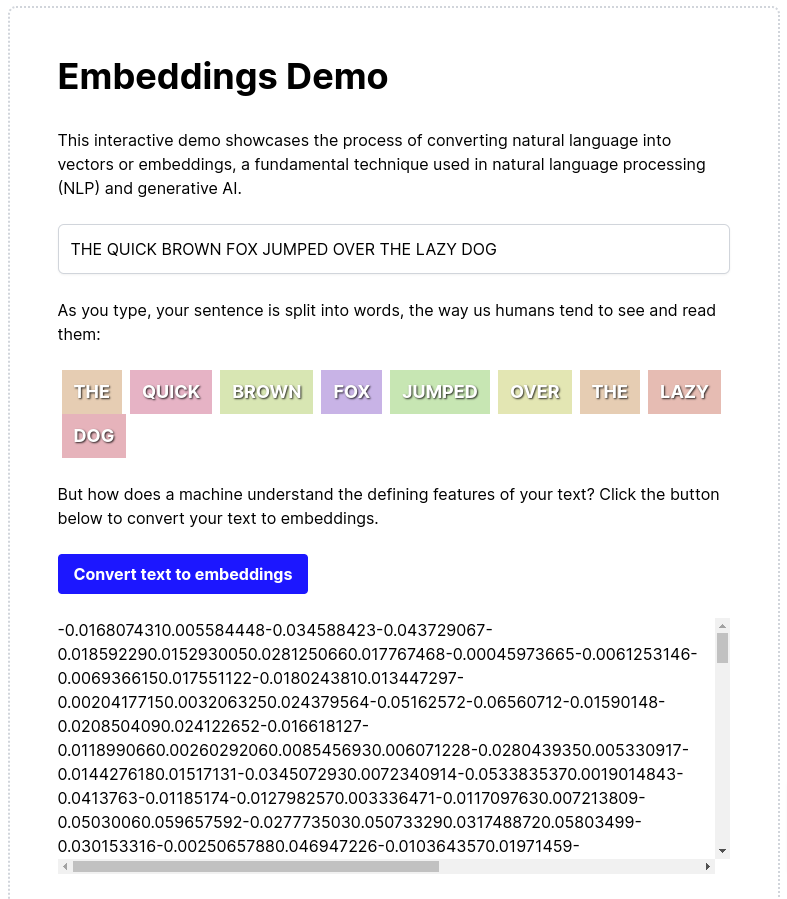- Next.js + tailwind
- OpenAI's
text-embedding-3-smallmodel - Node version 20 or higher
Requires Node version 20+
From the project root directory, run the following command.
npm installMake sure you have populated a .env.local file with your OpenAI API key:
OPENAI_API_KEY="your_openai_api_key_here"
Start the app.
npm run devIn this example we opted to use Next.js and the app router, which colocates the frontend and backend code in a single repository.
Frontend Client
The frontend uses Next.js and tailwind to allow users to enter free form text. This text is split by word on the client-side and then converted to tokens by the tiktoken library
when the user clicks the Convert text to embeddings button.
OpenAI's text-embedding-3-small model extracts the features of the text you provide it and returns vectors representing these features.
Backend API route
This project exposes an API route: /api/embeddings:
import { NextRequest, NextResponse } from 'next/server';
import OpenAI from 'openai';
const openai = new OpenAI({
apiKey: process.env.OPENAI_API_KEY,
});
export async function POST(req: NextRequest) {
const { inputText } = await req.json();
try {
const response = await openai.embeddings.create({
model: 'text-embedding-3-small',
input: inputText,
});
const generatedEmbeddings = response.data[0].embedding;
console.log(`Generated embeddings: %o`, generatedEmbeddings);
return NextResponse.json({ embeddings: generatedEmbeddings }, { status: 200 });
} catch (error) {
console.error('Error generating embeddings:', error);
return NextResponse.json({ error }, { status: 500 });
}
}